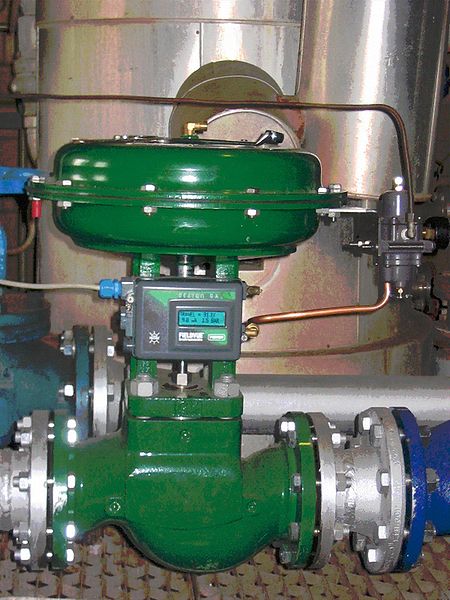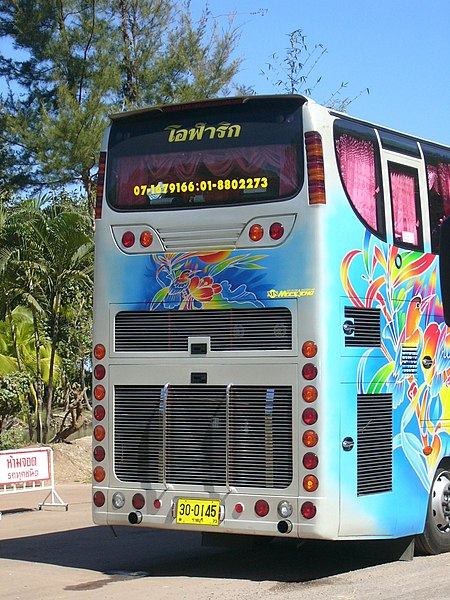In engineering, a fail-safe is a design feature or practice that, in the event of a failure of the design feature, inherently responds in a way that will cause minimal or no harm to other equipment, to the environment or to people. Unlike inherent safety to a particular hazard, a system being "fail-safe" does not mean that failure is impossible or improbable, but rather that the system's design prevents or mitigates unsafe consequences of the system's failure. That is, if and when a "fail-safe" system fails, it remains at least as safe as it was before the failure. Since many types of failure are possible, failure mode and effects analysis is used to examine failure situations and recommend safety design and procedures.
Globe control valve with pneumatic diaphragm actuator. Such a valve can be designed to fail to safety using spring pressure if the actuating air is lost.
An aircraft lights its afterburners to maintain full power during an arrested landing aboard an aircraft carrier. If the arrested landing fails, the aircraft can safely take off again.
In engineering and systems theory, redundancy is the intentional duplication of critical components or functions of a system with the goal of increasing reliability of the system, usually in the form of a backup or fail-safe, or to improve actual system performance, such as in the case of GNSS receivers, or multi-threaded computer processing.
Common redundant power supply
Extensively redundant rear lighting installation on a Thai tour bus




